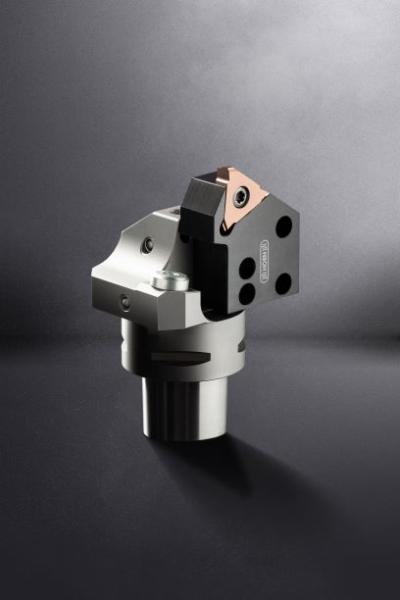
Hard shell - soft core: Horn has developed the new SG66 grade for turning workpieces having different hardness zones. When machining turned parts with hardened surface layers or with an interrupted cut, users quickly reach the limits of CBN inserts.
This is where the new grade comes in. In combination with the fine-grain carbide, the aluminium-titanium-silicon chromium nitride layer delivers high performance when machining hardened steels up to 58 HRC. The maximum allowable temperature is 1,200 degrees Celsius (2,192 degrees Fahrenheit).
Due to the high flexural strength of the carbide substrate, interrupted cutting is also possible in hardened materials. In addition to hard machining, the carbide grade is also suitable for reliably processing highly temperature resistant and other difficult-to-machine steel alloys.
The carbide grade SG66 is available for all common Horn insert systems. The in-house coating also enables a short delivery time for special tools. SG66 cannot replace the CBN grade. Horn has, however, filled the gap for particularly difficult groove turning applications. In comparison, the CBN grade achieves twice the cutting speed and more when machining through-hardened materials.
Contact Details
Related Glossary Terms
- alloys
alloys
Substances having metallic properties and being composed of two or more chemical elements of which at least one is a metal.
- cubic boron nitride ( CBN)
cubic boron nitride ( CBN)
Crystal manufactured from boron nitride under high pressure and temperature. Used to cut hard-to-machine ferrous and nickel-base materials up to 70 HRC. Second hardest material after diamond. See superabrasive tools.
- cutting speed
cutting speed
Tangential velocity on the surface of the tool or workpiece at the cutting interface. The formula for cutting speed (sfm) is tool diameter 5 0.26 5 spindle speed (rpm). The formula for feed per tooth (fpt) is table feed (ipm)/number of flutes/spindle speed (rpm). The formula for spindle speed (rpm) is cutting speed (sfm) 5 3.82/tool diameter. The formula for table feed (ipm) is feed per tooth (ftp) 5 number of tool flutes 5 spindle speed (rpm).
- hardness
hardness
Hardness is a measure of the resistance of a material to surface indentation or abrasion. There is no absolute scale for hardness. In order to express hardness quantitatively, each type of test has its own scale, which defines hardness. Indentation hardness obtained through static methods is measured by Brinell, Rockwell, Vickers and Knoop tests. Hardness without indentation is measured by a dynamic method, known as the Scleroscope test.
- interrupted cut
interrupted cut
Cutting tool repeatedly enters and exits the work. Subjects tool to shock loading, making tool toughness, impact strength and flexibility vital. Closely associated with milling operations. See shock loading.
- turning
turning
Workpiece is held in a chuck, mounted on a face plate or secured between centers and rotated while a cutting tool, normally a single-point tool, is fed into it along its periphery or across its end or face. Takes the form of straight turning (cutting along the periphery of the workpiece); taper turning (creating a taper); step turning (turning different-size diameters on the same work); chamfering (beveling an edge or shoulder); facing (cutting on an end); turning threads (usually external but can be internal); roughing (high-volume metal removal); and finishing (final light cuts). Performed on lathes, turning centers, chucking machines, automatic screw machines and similar machines.

